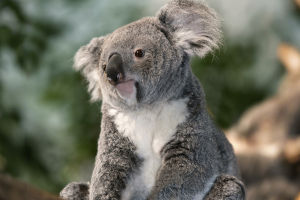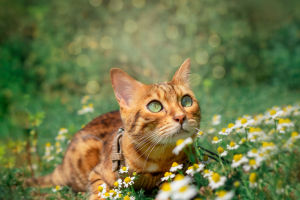Lykkers, we all know meerkats from movies and nature documentaries, where they are often seen as small, social creatures living in large groups. But did you know that not all meerkats live the same length of time?
Surprisingly, those at the top of their social hierarchy—meerkat leaders—live longer than their subordinates.
A recent study from Cambridge University has uncovered some surprising secrets about meerkat lifespan and how social status can play a huge role.
Let's dive into the research that reveals how leadership impacts the longevity of these fascinating animals.
Meerkats: A Social and Family-Oriented Species
Meerkats, also known as suricates, are family-focused animals that live in tight-knit groups. A typical meerkat group can range from 2 to 50 individuals, all working together in a cooperative society.
Within the group, there are dominant male and female leaders, and it is these leaders that create most of the offspring—about 90% of the pups are born from them. The rest of the group often forfeits their breeding opportunities to help raise the pups of the leaders.
While this seems like a selfless act, it's not without its costs. Raising offspring is a physically demanding task that usually speeds up aging, so it's surprising that, despite their high reproductive output, leaders often outlive their subordinates. This phenomenon has intrigued scientists for years, especially when compared to other animals that have similar social structures, such as ants and bees, where reproductive individuals also live longer.
The Secret to Longer Life: How Meerkat Leaders Survive
To understand how the leaders live longer, researchers looked into the biology of the meerkats. It turns out that, despite the added stress of reproduction, meerkat leaders have a mechanism that seems to protect them from the aging effects seen in their subordinates. In the study conducted in the Kalahari Desert, scientists tracked meerkats from birth to death, regularly taking blood samples and studying their biological markers.
One of the key biological indicators that researchers studied was the telomere, often called the "biological clock" of cells. Telomeres are the protective caps at the ends of chromosomes, and every time a cell divides, these caps shorten.
When the telomeres become too short, cells stop dividing, leading to aging and death. Interestingly, the study found that the telomeres in the leaders actually shortened more quickly than those in the subordinates. But this didn't seem to affect their lifespan.
Why Do Leaders Live Longer Despite Faster Telomere Loss?
So why do leaders live longer even with faster telomere loss? The answer seems to lie in the demands of their position. Leaders are not only responsible for breeding, but they also manage the group's social structure, which can put extra strain on their bodies. However, despite this, they benefit from more stable living conditions within the group, which may help reduce the risks of predation and stress compared to the subordinates.
The study suggests that while telomere shortening is a major factor in aging, social status and the related stress factors play a more significant role in determining the life expectancy of an animal. In the case of meerkats, the leaders may face more stress in their reproductive and social duties, but they also benefit from a safer environment within their group, which increases their chances of living longer.
The Harsh Reality for Meerkat Subordinates
For the subordinates, however, life is much harder. As meerkats age, they often find themselves forced out of the group, either to find a mate or due to conflicts with dominant females. Once they leave the safety of the group, they are exposed to greater risks, including predators. This high mortality rate among subordinates explains why they don't live as long as the leaders.
This stark contrast in lifespan between the leaders and their subordinates is not just a sad fact of meerkat life; it also reflects the broader challenges faced by animals in social hierarchies. Scientists believe that these social factors—such as the security of group membership—are far more important in determining lifespan than biological mechanisms like telomere length alone.
The Social Side of Longevity
So, what does this all mean for us, Lykkers? Just like meerkats, humans are also affected by our social environments. While telomeres may play a role in aging, our social lives, stress, and overall well-being have an even greater impact on how long we live.
The meerkat study gives us a fascinating insight into how social structure and leadership can influence lifespan, and perhaps we can learn a thing or two about the importance of community and support in our own lives.
In the end, just like with meerkats, our social roles and the environments we create for ourselves play a crucial role in our longevity. So, next time you look around at your circle, think about how the support you offer and receive might just be as important to your health and longevity as the biological factors we can't control. Let's continue to learn from the animal kingdom, and who knows what other life lessons we might find, Lykkers!


